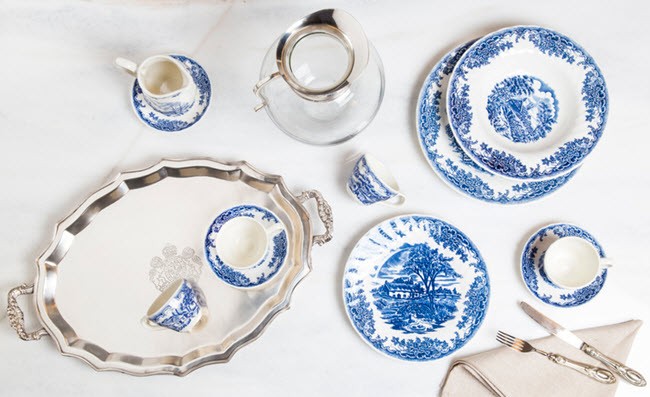What is the difference between porcelain and earthenware? It would seem that they are obtained from the same material - clay, in the same way - by firing, and they have one generalizing name: ceramics. Why then are porcelain products much more valued and much more expensive?
In fact, the common features of these two materials end with some external similarity (and even then, with a little experience, they can be unmistakably distinguished from each other). The physical qualities of porcelain and earthenware are completely different. Let's consider them in more detail.
Content
Porcelain and earthenware: similarities and differences
Both materials are obtained by sintering a mixture of clay with the addition of mineral and inorganic components.
But to get porcelain, use:
• a small amount of a mixture of plastic clay;
• up to 66% kaolin (white clay);
• up to 45% quartz and up to 30% feldspar.
And to obtain faience, they take:
• up to 32% clay mixture;
• up to 31% quartz;
• about 14% kaolin;
• chalk or marble.
A higher temperature is required to produce porcelain. It turns out to be highly durable, but lightweight. It is a very dense, non-porous, thin, heat-resistant material. Porcelain sounds high, clear and long from a slight blow, and if you bring a porcelain cup to a light source, you will see that its walls are translucent.
Faience is more fragile, rough, porous, therefore it is able to absorb a small amount of water. It is glazed to smooth out these imperfections. It is heavy, opaque, with a matte tint.
So, here is the difference between porcelain and earthenware:
• Porcelain is highly valued for its decorative properties, it is used to make art objects and expensive tableware.
• Faience absorbs liquids, so it reacts to temperature changes and is not so hygienic.
• Porcelain is lighter, but stronger than earthenware.
• Faience is easier to obtain, it is cheaper.
What is porcelain
When changing the proportions of the components of the mixture, different porcelain is obtained. It is divided into soft and hard. Soft porcelain is not so durable, it tolerates temperature changes worse. It contains a small number of small pores. Hard porcelain is a dense, impact-resistant, non-porous ceramic. The material is transparent and almost weightless, it is smooth and white. It makes excellent dishes and vases. By clicking on the links to the online store https://posudatop.ru/, you will find a large selection of utensils and kitchen utensils.
Regardless of the type, any porcelain mass is always white. No dyes are added to it, because the color will not allow you to get a transparent, thin and at the same time durable material.
What is faience
The mass from which faience is obtained is also white, but dyes are often added to it. You can get products of all kinds of shades from faience. Magnesia, silicon, lime, carbon dioxide are sometimes added to the mixture. These additives affect the properties of the material, its porosity, smoothness, and brittleness. Different types of faience are used to make dishes, tiles, plumbing, figurines.
Porcelain and earthenware are in high demand. And their price and species variety allows the consumer to choose the most suitable option.

